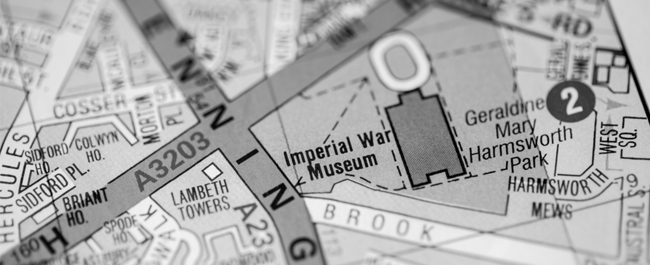Transforming our understanding of military conflict

Research at Bristol has helped to reshape museum collections and informed archaeological investigations.
Research highlights
- Changed the way we perceive the value of art and other material culture arising from modern conflict.
- Revolutionised the curation and exhibition of conflict-related objects in museums globally.
- Created a new anthropological archaeology of modern conflict.
- Inspired plays and other creative productions based on First World War themes.
Until recently, museums often dismissed conflict-related artworks and objects made by soldiers and their families, considering them to be of little public interest. Pioneering research by the Department of Anthropology and Archaeology at Bristol has reshaped this view.
By demonstrating the value of these objects for understanding wartime experiences, the research has transformed museum practices and led to a new approach to the archaeology of modern conflict.
Investigating trench art
The research led by Professor Nicholas Saunders initially focussed on locating, describing and analysing First World War ‘trench art’: memory objects and souvenirs made by soldiers, prisoners of war and civilians between 1914 and 1939.
His approach was groundbreaking because it focused on the social-cultural role of these objects in the family home and for family histories, foregrounded with personal testimony and memory. This marks a significant shift away from describing an object’s original military function.
Changing perceptions of the First World War
Building on this research, Professor Saunders collaborated with museum professionals globally to reinterpret, conserve and display trench art. At the Imperial War Museum, his work helped curators understand their trench art collections, leading to a restructuring of curatorial teams.
In the 'Sappers and Shrapnel: Contemporary Art and the Art of the Trenches' exhibition at the Art Gallery of South Australia, Professor Saunders’ contributions helped attract over 32,000 visitors and significantly boosted public engagement with conflict history.
In Belgium, he collaborated with the In Flanders Fields Museum to integrate trench art into its exhibitions and facilitated the donation of 27 engraved shell casings by Chinese labourers.
This contribution and later acquisitions made the museum the holder of the largest collection of Chinese trench art from the First World War, attracting Chinese visitors with unique exhibits commemorating the little-known Chinese involvement and impact on the Western Front.
Boost for British heritage
In the UK, Professor Saunders extended his research to increase public engagement with the First World War Centenary through projects with English Heritage and the Council for British Archaeology.
These initiatives trained volunteers to record data from local heritage sites, resulting in over 5,000 new archaeological records and modifications to the National Heritage List.
A new anthropological archaeology of modern conflict
Building on this work, Professor Saunders has expanded his research into a broader ‘anthropological archaeology’ concept that can be applied to all 20th and 21st-century conflicts.
Examples of this approach have included work on the Great Arab Revolt Project, a 10-year investigation of the 1916-18 conflict in Jordan where Professor Saunders brought a new, theoretically nuanced and interdisciplinary perspective.
His approach cast the net far wider than a straightforward archaeology survey and dig to include issues of memory and landscape, material culture, oral history, family biographies and interaction with local Bedouin communities to locate historical sites.
Wider cultural impact
Testimony to the impact of this work, Professor Saunders' research has inspired several creative productions. Writer Jan Woolf, a participant in the Great Arab Revolt Project, wrote The Man with the Gold, a play about TE Lawrence based on her experiences excavating bits of wrecked railway, soldiers’ buttons and cartridges.
Woolf said that she "literally dug a play out of the desert, turning the detritus of war and human devastation into dialogue.”
Similarly, research on Chinese trench art inspired actor and director Daniel York Loh to create Forgotten, a play about the story of the 140,000-strong Chinese Labour Corps that worked for the Allies during the First World War. Loh, a Chinese descendent, described seeing Chinese people in the audience as “extraordinary”.
Professor Saunders has expanded his research into a broader ‘anthropological archaeology’ concept that can be applied to all 20th and 21st-century conflicts.
Connect with the researcher
Professor Nicholas J Saunders, Emeritus Professor, Department of Anthropology and Archeology
Cite the research
- Saunders NJ (2010), 'Killing Time': Archaeology and the First World War, rev. ed., Cheltenham: The History Press
- Saunders NJ and Cornish P (eds) (2009), Contested Objects: Material Memories of the Great War, Abingdon: Routledge
- Saunders NJ and Faulkner N (2009). War without frontiers: The archaeology of the Great Arab Revolt, in Peacock B (ed.), The Frontiers of the Ottoman World, pp.431-451, Proceedings of the British Academy 156. Oxford: Oxford University Press